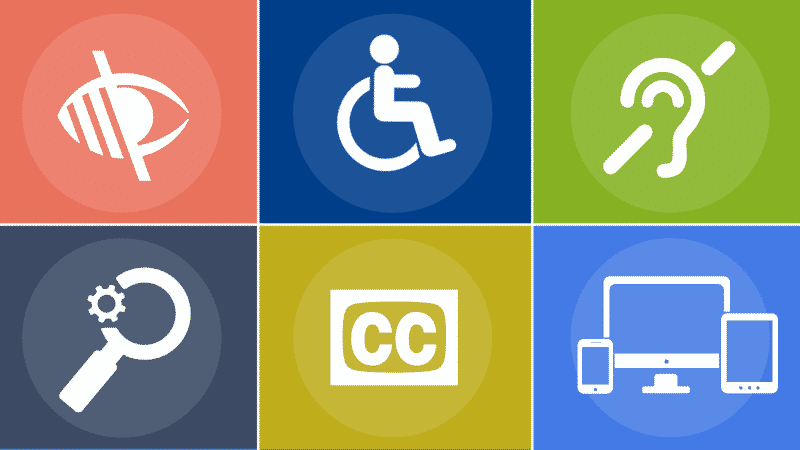The Internet has transformed everyone’s lives. It has changed the way we exchange messages and thoughts, do our research, handle our finances, and go about our jobs, among others. Unfortunately, not all websites were created with inclusion in mind.
Accessibility means being able to cater to the needs of all individuals including those with limitations-physical or mental. Anyone should be able to get the information and make use of all features available on any site. After all, accessibly affects user experience (UX) greatly.
Why Accessibility Becomes More and More Important Nowadays
Internet technology has become mainstream, which is why website owners and creators should take into account web accessibility. In many countries it is now a legal requirement. As such, both public and private sectors should consider having fully accessible websites as their social responsibility.
Website Accessibility
Website accessibility is about ensuring inclusion. This means designing sites that can easily be navigated by all, regardless of an individual’s disabilities.
Billions of transactions are done using the internet such as dealing with the government, shopping, booking accommodations and flights, procuring a variety of goods, and many others. As such, all internet sites must be easy to use and navigate for everyone’s convenience. Websites that were designed with accessibility in mind provides a better user experience for all— those with or without any limitations or disabilities.
There are many ways web owners, creators and designers can incorporate web accessibility in their sites. For example, choosing fonts and colors to make navigation and reading from the small screens of tablets and smartphones easier. There’s also the option of adding transcripts for audio content for those with hearing impairments.
Unfortunately, some website owners fail to understand that the lack of inclusion could result in damage to their brand and reputation. They also increase the risk of getting sued. That is why it is essential to get an ADA compliance audit from Be Accessible to be sure that your business is free from litigation and bad press.
Understanding Web Accessibility
Some laws and guidelines cover web accessibility standards. For one, there’s the Americans with Disabilities Act, a federal law ensuring the protection of the rights of those disabilities and Section 508, mandating the compliance of all government websites with ADA guidelines. The WCAG or Web Content Accessibility Guidelines is a set of international standards used to ensure the accessibility of websites.
What is the ADA?
The Americans with Disabilities Act or ADA is a comprehensive federal law created to ensure the protection of the rights of individuals with disabilities. The law mandates that all offices, institutions both in private and public sectors, or organizations to make sure that their services or goods are accessible to persons with cognitive or physical limitations.
Arguably, web accessibility is not specifically mentioned but it is viewed as part of Title III of the ADA constitution, which pertains to Public Accommodations. As such, plenty of commercial organizations have been sued for their non-compliance to these standards.
What is Section 508?
Section 508 or more popularly referred to as “508 Compliance” details the requirement for ADA compliance for government websites. Section 508 amends the 1973 Workforce Rehabilitation Act, which requires compliance to ADA web accessibility standards of all electronic and information technology (EIT) of federal offices.
What is WCAG?
Due to the failure of ADA to define web accessibility clearly, web developers and designers consult the Web Content Accessibility Guidelines or WCAG. This is an international standard that outlines how one can make any website accessible.
In 2018, WCAG was updated from version 2.0 to 2.1. The new version also includes the success criteria set in version 2.0 but with additions to address the needs of individuals with mobile accessibility, low vision, learning and cognitive issues.
What is VPAT?
VPAT stands for Voluntary Product Accessibility Template and was first used as a tool in researching how the governments use Information and Communication Technology (ICT). VPAT is currently being used to determine the accessibility of websites in compliance with the requirements found in Section 508 and ADA.
Web Accessibility Standards to be Considered at the UX Design Stage
Designing websites often start by thinking about aesthetics. After all, carefully curated graphics, fonts, buttons, and other visual elements tend to attract more visitors to any website.
There isn’t any trade off when creators prioritize web accessibility. Creating a visually attractive and accessible website at the same time is possible. Web developers and designers can do the following:
Enable Keyboard Navigation for Web Design
Websites that conform to ADA are keyboard accessible, which means that the functionalities of the site are all accessible with the use of a keyboard. Web creators must keep in mind that many disabled persons use their specialized keyboards. Websites should be following an easy visual flow like “top to bottom” or “right to left”, so that navigation with a keyboard becomes inclusive for all.
Prioritize Text Claritys
Many individuals suffer from visual problems such as far or nearsightedness, color blindness, low vision or cataract. Thus, any written content must be easy to read.
Don’t Rely Exclusively on Color
Color is not the only element in making web content available for all. The font’s size and style are essential as well. Arial, Calibri, Times New Roman, and Verdana are some of the most highly recommended font for a better web accessibility UX.
Order Content in HTML for Screen Readers
When contemplating on content structure, one should think of individuals who rely on screen readers, which are devices used in converting digital text to synthesized speech. Unfortunately, screen readers can only translate content linearly.
Explanatory Link Text
Adding a text description goes a long way in helping website users differentiate one link to another. A link redirecting users to an image should explain what the link is for. A link that has both an image and text can have a description that helps identify both the image and content.
Use 40X40 pt. Clickable Area for Touch Controls
Individuals that have mobility concerns tend to rely on touch controls in navigation. There should be sufficient space for clickable areas or CTAs when designing the web interface.
Do Not Forget to Follow the Accessibility Checklist
Having an accessibility checklist will help in ensuring that all sections of the website make for a great web accessibility UX. The checklist should include what’s outlined in the WCAG 2.1.
How Accessible Web Design Can Lead to a Better User Experience
An accessible web design is not only great for those with disabilities but also provides great web user experience to those without limitations.
For example, websites leveraging on easy to read fonts or contrasting colors help users in accessing the site via a small screen. Likewise, audio transcriptions are also great tools for those who would like to know the content of the videos on the site. This is why digital marketing agencies work closely with their clients to ensure that web accessibility is a top priority during the design phase as great user experience is also vital to business growth.
What is Accessibility Guide and Accessibility Statement?
Web owners should consider creating a page dedicated to discussing the site’s compliance to ADA and WCAG requirements. This page tells users how they can navigate the website despite their limitations.
Having an accessibility statement in the footer of your website is one way of reaffirming an organization’s commitment in adhering to the website accessibility requirements.
Inclusiveness is a hot topic globally these days. And given everyone’s reliance on the internet for a variety of tasks, it is important to ensure that websites can cater to all individuals’ needs regardless of their limitations.
It is imperative for web owners, designers, and developers to think about user experience for all. Fortunately, there are guidelines like the WCAG to ensure compliance with web accessibility. Take the time to craft the accessibility checklist and ensure that everything listed is covered. Great user experience in your websites, after all, can help build your brand, reputation, and credibility.
David Gevorkian
CEO/Founder
David started Be Accessible because of his passion for website accessibility and ADA compliance. He spent much of his career working for financial institutions creating websites and mobile applications. He earned his Master’s in Business Administration from Salve Regina University in Rhode Island. David is an advocate for creating web interfaces usable by all people. He enjoys recording music and playing soccer with friends.












